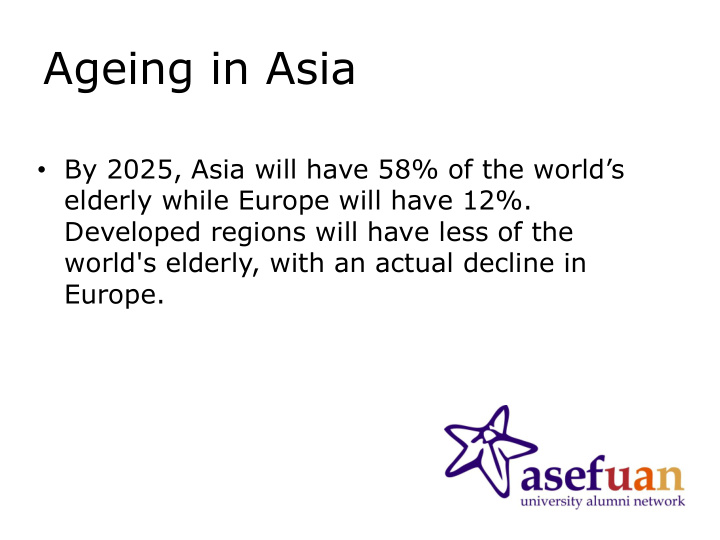



Ageing in Asia • By 2025, Asia will have 58% of the world‟s elderly while Europe will have 12%. Developed regions will have less of the world's elderly, with an actual decline in Europe.
Ageing in Asia • By 2030 one quarter of the population of Asia will be over 60, and by 2040 Asia will be demographically mature, with more older than younger people. • While it took Europe (EU 15) some 120 years to go from a young to mature population, such a shift in the proportion of young and old will have occurred in Asia in less than 25 years.
Ageing in Asia • Three concerns raised on ageing: 1. health costs 2. pension costs 3. intergenerational solidarity (Center for Non-Traditional Security Studies, “Demographic „Time Bomb‟ or Demographic „Dividend‟ : Myths Surrounding Ageing Populations in Asia,” August 2010)
Rethinking Ageing in Asia • Predominant, “apocalyptic” view of ageing • Is it a demographic time bomb, or a demographic dividend?
Rethinking ageing in Asia • Dependency ratios and how they can mislead policy failure to integrate other factors, such as: 1. productivity of older persons 2. barriers to full engagement of women into the workforce
Why it is relevant to rethink the ageing phenomenon • The perspective on ageing that is used determines policies for BOTH THE OLD AND THE YOUNG.
The Youth and Ageing • Concept of intergenerational solidarity: reciprocity, integration • Ageing is a lifelong process that begins at birth. • Need to adopt a “life - course” and human rights-based approach to ageing
World Youth Alliance: “We are all members of an ageing society.”
Recommend
More recommend